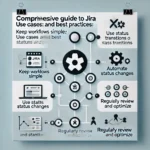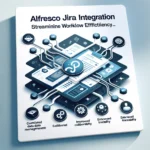Arch Linux vs. Manjaro: Choosing the Right Linux Distribution
When it comes to Linux distributions, the choices seem endless. Two popular options that often pique the interest of users looking for a more hands-on Linux experience are Arch Linux and Manjaro. Both have their own unique strengths and characteristics, making them suitable for different types of users. In this article, we’ll dive into the Arch Linux vs. Manjaro debate, comparing these two distributions in various aspects to help you make an informed decision.
Overview
Arch Linux
Arch Linux is a rolling-release, lightweight, and highly customizable Linux distribution designed for experienced users who want complete control over their system. It follows a minimalist philosophy, providing users with a bare-bones installation and allowing them to build their system from the ground up using the Arch User Repository (AUR) for package management.
Manjaro
Manjaro, on the other hand, is an Arch-based distribution that aims to make the power and flexibility of Arch Linux more accessible to a wider audience. It offers a user-friendly installation process, a curated selection of packages, and tools to simplify system management, making it a great choice for both newcomers and experienced users.
https://synapsefabric.com/2023/09/02/arch-linux-vs-fedora-comparison-for-choosing-the-right-linux-distribution/
Comparison Table
Let’s break down the differences between Arch Linux and Manjaro in a handy comparison table:
| Aspect | Arch Linux | Manjaro |
|---|---|---|
| Installation | Manual, command-line installation process | User-friendly graphical installer |
| Package Management | Pacman (command-line) and AUR | Pacman (command-line), AUR, and Pamac |
| Release Model | Rolling release | Rolling release |
| Repository | Minimal, user must add packages manually | Curated selection of packages |
| User Experience | Minimalistic, requires configuration | Polished, more user-friendly |
| Software Availability | Extensive but user-dependent (AUR) | Extensive, including AUR, well-curated |
| Stability | Bleeding-edge, potential for breakage | Slightly more stable due to testing |
| Community Support | Strong community support | Strong community support |
| Documentation | Extensive, Arch Wiki | Comprehensive Manjaro documentation |
| Performance | Lightweight and highly optimized | Lightweight with optimizations |
Now, let’s explore these aspects in more detail.
Installation
Arch Linux: Arch’s installation process is known for its manual and command-line approach. While this may seem daunting for newcomers, it provides complete control over the system’s setup, allowing users to tailor it to their specific needs.
Manjaro: Manjaro offers a user-friendly graphical installer that simplifies the installation process significantly, making it a more accessible option for those who prefer a point-and-click setup.
Package Management
Arch Linux: Arch relies on Pacman for package management, which is a robust and efficient command-line tool. Users can also tap into the Arch User Repository (AUR) to access a vast collection of community-contributed packages.
Manjaro: Manjaro uses Pacman as its primary package manager as well. In addition to the official repositories, Manjaro also provides access to the AUR. For those who prefer a graphical interface, Manjaro includes the Pamac package manager, offering a more user-friendly approach.
Release Model
Both Arch Linux and Manjaro follow a rolling release model. This means that you’ll have access to the latest software updates and features as soon as they become available, without the need for version upgrades.
Repository
Arch Linux: Arch maintains a minimal official repository, which means users must add packages manually to their system. This approach offers complete control but requires more effort.
Manjaro: Manjaro, in contrast, curates a selection of packages in its official repositories, making it easier for users to access a wide range of software without manual intervention.
User Experience
Arch Linux: Arch provides a minimalistic base system and leaves it up to the user to configure their desktop environment, drivers, and software. This gives experienced users full control but can be overwhelming for beginners.
Manjaro: Manjaro offers a more polished and user-friendly experience out of the box. It includes a variety of desktop environments to choose from and provides pre-configured settings for a smoother start.
Software Availability
Arch Linux: Arch boasts an extensive software library through the AUR, which allows users to access a vast number of packages contributed by the community. However, the user is responsible for package compatibility and potential maintenance issues.
Manjaro: Manjaro also leverages the AUR, offering a vast software selection. Additionally, Manjaro’s curated official repositories ensure that most software works seamlessly with the distribution.
Stability
Arch Linux: Being a rolling-release distribution, Arch may occasionally introduce updates that could cause system instability. Users need to stay vigilant and follow Arch news and documentation to mitigate potential issues.
Manjaro: Manjaro aims for a slightly more stable experience by testing updates before releasing them to the stable branch. This reduces the chances of encountering major disruptions.
Community Support
Both Arch Linux and Manjaro benefit from strong and active communities. You can find extensive documentation, forums, and support channels for troubleshooting and assistance with these distributions.
Choosing between Arch Linux and Manjaro ultimately comes down to your experience level and preferences.
- If you are an experienced user who values complete control, doesn’t mind the occasional system tweaking, and appreciates a lightweight and minimalistic approach, Arch Linux might be the ideal choice for you.
- On the other hand, if you’re new to Linux or prefer a more user-friendly experience with easier installation, pre-configured settings, and a curated package selection, Manjaro is a fantastic option that still maintains many of the benefits of Arch Linux.
Remember that both distributions are part of the Arch ecosystem, so if you ever outgrow Manjaro’s training wheels, transitioning to Arch Linux will be relatively straightforward. In the end, the best choice is the one that aligns with your Linux journey and the level of customization and control you desire.






